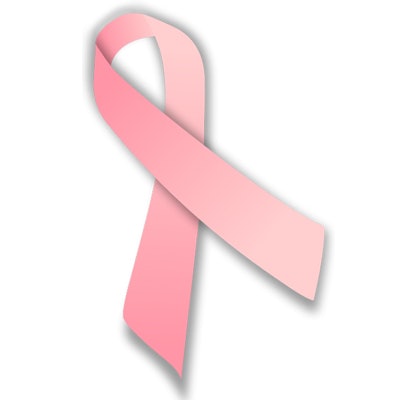
Every year around the world, Breast Cancer Awareness Month is observed in October, with activities ranging from fundraising walks to patient education and screening initiatives. But is October really the best time for this outreach? Brazilian researchers say perhaps not, according to a new study published April 6 in JMIR Public Health and Surveillance.
Previous studies have explored the "what," "how," and "where," of breast cancer education and disease prevention campaigns -- that is, the best information to distribute, the most effective ways to disseminate information, and the most appropriate environments. But when to intervene is less clear, according to a team led by Dr. Paulo Roberto Vasconcellos-Silva, PhD, of the National Cancer Institute Brazil in Rio de Janeiro.
Why? Because sharp drops in interest over the course of the calendar year may indicate that the October education initiatives don't have staying power, the group wrote.
"Considering [our study] findings, it would be reasonable to bring Pink October to the beginning of each year, thereby extending the beneficial effect of the campaigns," the authors wrote (JMIR Public Health Surveill, April 6, 2017, Vol. 3:2, e17, pp. 1-8). "It would be more appropriate to start screening campaigns at the beginning of the year, when new resolutions are taken and new projects are added to everyday routines."
Priming the pink
To study cycles of public interest in breast cancer screening, Vasconcellos-Silva and colleagues used Google Trends data to evaluate searches for keywords "mammography" and "breast cancer" between November 2011 and October 2016.
Google Trends organizes search data by its Search Volume Index, a relative scale of 0 to 100 (with 100 being the peak of popularity and 0 being less than 1% of peak volume) and presents the data as a weekly relative search volume number. The researchers compared weekly and monthly relative search volume results with annual mean search volume results.
The group found upward trends for both terms over the study time frame, with dramatic peaks in the Pink October months: Searches for the term "mammography" increased by 119% over annual means in 2016, while searches for "breast cancer" increased by 197%.
But the team also noticed downward relative search volume trends between December (27% below annual means) and January (37% below annual means).
| Search trends for 'mammography' by Google Search Volume Index score | |||
| Annual mean | Pink October | December/January | |
| 2016 | 26.2 | 57.4 | N/A |
| 2015 | 22.7 | 44.8 | 19.3 |
| 2014 | 21 | 33 | 15.3 |
| 2013 | 17.8 | 27.5 | 14.8 |
| 2012 | 15.8 | 18.5 | 12.7 |
| Search trends for 'breast cancer' by Google Search Volume Index score | |||
| Annual mean | Pink October | December/January | |
| 2016 | 31.8 | 76.6 | N/A |
| 2015 | 31 | 92 | 22.8 |
| 2014 | 30.9 | 76 | 19.6 |
| 2013 | 25.2 | 54.3 | 18.8 |
| 2012 | 21.3 | 33 | 13.9 |
Why the declines in December and January? They may be due to cultural factors, the group wrote.
"[The] gap may be due to Brazilian cultural aspects concerning summer vacations, Christmas, and New Year's celebrations," the team wrote. "People tend to disregard issues related to illness and death, typically postponing health decisions for the next year."
Pink February?
The study findings led the researchers to wonder whether adjusting Brazil's breast cancer screening campaign from October to February would be more effective.
"Given the described findings and considering that the effectiveness of the campaigns may be influenced by their impact and persistence in everyday life ... it would be reasonable to consider some changes in Pink October timing," the group wrote. "If we ... change to 'Pink February,' would more people be interested in breast cancer screening for a longer period of time?"
Moving the public education campaign to the beginning of the year, combined with additional targeted efforts, could raise awareness and increase women's compliance with screening, Vasconcellos-Silva told AuntMinnie.com. But women also need to be able to access mammography easily.
"We could organize short-term campaigns with celebrities who, as we know, are levers of public interest for health issues," he said. "It is also important to provide access to mammograms, which are insufficient to meet the demand in these holiday months."
In Brazil, curiosity and fear are the main reactions to the topic of cancer, Vasconcellos-Silva noted.
"In the last decade, Internet queries on 'cancer prevention' have been insignificant," he said. "In contrast, for the first time, queries on 'what to do' have broken through the curiosity/fear factor. I believe that Brazil is still in the stage of living in denial concerning health problems. So what can we do in terms of screening campaigns to address this collective denial, and how can we do it?"
Actually, when it comes to breast cancer prevention, clinicians need to go beyond screening campaigns, according to Vasconcellos-Silva.
"In the clinical dimension, at the individual level, it is possible to go far beyond offices 'pinkification,' which means a more assertive approach so that patients feel free to discuss their fears," he said.
Could a change in the timing of Breast Cancer Awareness Month work in the U.S.? It would be difficult, said Dr. Stamatia Destounis of Elizabeth Wende Breast Care in Rochester, NY.
"I'm all for publicizing screening -- every day, all year -- so that women can learn about its importance," she told AuntMinnie.com. "But the fact is that October is ingrained in the minds of women and their families as the month to 'Think Pink,' and it would take a considerable amount of re-education to change that mindset."



















